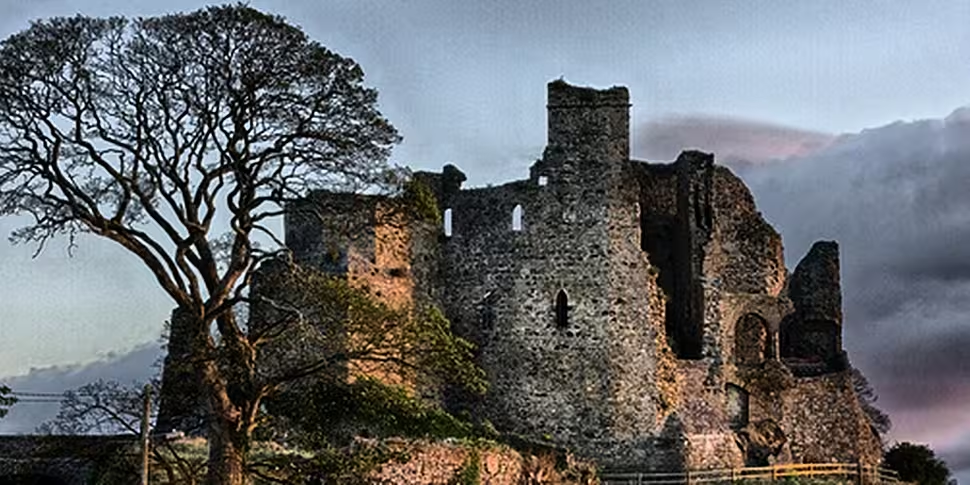Every Tuesday, Manchán Magan come into studio with George Hook to broaden our horizons and share the best advice on where to go to next. Tune in live from 6.30pm or listen back to the show's podcasts here.
The Cooley Peninsula was best known as a hideout for leprechauns and IRA men, until locals, realising the amazing surroundings, banded together to form the Oyster Festival. It has totally transformed itself into one of the foremost tourism sites in recent year: only one hour from Dublin & Belfast. It’s a world away from those border years, when the roads here were spiked. They now have 10 months of tourism. Only January and February is quiet, focusing on enticing retirees mid-week.
In 2008 the locality applied and won the status of EDEN (European Destination of Excellence) for ‘Intangible Heritage’, for the tradition of storytelling. It truly is a must-visit if you like the outdoors, heritage, culture, scenery. And Medieval Irish history, as Carlingford is one of the best preserved towns in the country, complete with the tholsel (toll house), gaol, and mint dating from the 15th Century. Added now to the mix is the gorgeous Art Deco court house, which is now the library, as well as a charming old cinema.
Seek out King John’s Castle, commissioned by Hugh de Lacy for Richard the Lionheart’s brother when he visited in 1210. Extensions were added in the 13th, 15th and 16th centuries. Taafe’s Castle and the Dominican Friary are worth a visit too.
If a sense of adventure is pulsing through your veins, the peninsula won’t let you down.
Carlingford Adventure Centre has mountain and sea activities, now they’ve added sky. There are more than 20 land and water activities including canoeing, kayaking, water trampolines, pier jumping, rock climbing, abseiling, zorbing, archery, and a high-ropes course. The centre employs 60 staff or more in summer, including language courses. A thrilling zip wire can be done outside in all weather. Outdoor Laser is great in mist and dark weather; the red laser beams look eerie.

Not for the faint hearted [Carlingford Adventure Centre]
The Slieve Foy Loop is a great walk across the Carlingford sand flat with slate rock above. Mourne Peninsula is a classic patchwork of green fields with squares of darker emerald, spruce forest about and tawny brown flanks on steeper realms and sandy shores.
The Leprechaun Cavern might well appeal to the young and young at heart. In 1989 a Leprechaun suit and bones were found by a PJ O’Hare on Foy Mountain, complete with four gold coins in the pocket of the suit. He never saw a leprechaun but kept the suit and bones. The coins disappeared. Some years after he died the gold coins were discovered hidden in a wall on Ghan Road Carlingford. Each coin bestowed a gift on the finder.
One - that he could communicate with the last 236 leprechauns left in Ireland. The man's name was Kevin Woods known locally as McCoillte, Ireland’s last Leprechaun Whisperer.

Leprechauns are a protected species in the area [YouTube]
This is an underground Leprechaun and Fairy cavern linked by two tunnels. One runs under Carlingford and exits into the home of the 236 Last Leprechauns of Ireland below the Slate Rock on Foy Mountain.The other runs under Carlingford Lough and exits at the Fairy Glen in Rostrevor. It is also the home of the tooth fairy. Entry to the cavern and the story of the survival of the 236 is relayed to you by the last Leprechaun Whisperer in Ireland, Kevin Woods, or in his absence a member of his extended family.
Entry is €3 per adult and €5 per child and the child price includes a choice of one of 15 Leprechauns associated with the story and their survival. The Leprechauns were protected in 2009 by the EU under the European Habitats Directive.
236 lepreauchans left – and roughly the same amount of believers. The countryside’s flora and fauna can all be looked at through the prism of Leprachuans. The Leprauchans were there before Druidery, and the arrival of the Vikings, and the Kings, and St Patrick coming up the Lough. Then came the Normans and Cromwell and the Famine – the leprechauns watched it all. They intersected with human spirits. No one can be sure if they exist or not, so better stray on the side of caution.
The Cavern takes kids away from their iPhones and makes them fire up their imaginations.
More discerning visitors might like Greenore, a perfectly preserved, still functioning Victorian village. Built over four years at a cost of £153,000 by the London North Western Railway Company as a railway terminal and ferry port. It was the only completely planned village in Ireland and at the time of design was considered state of the art.

Greenore in summer time [Pixabay]
Greenore had a railway station built inside a magnificent Hotel on a quayside with luxury passenger liners sailing regularly for Holyhead a mere 79 miles away. Grey limestone, granite and bricks: Still today the original Schoolhouse, Police Barracks, dock workers homes on Euston Street & Anglesey Terrace. Also Wooden chalets, Coast Guards, Beach Cafe, Greenore Lighthouse, Greenore Hotel and Greenore Golf Club. When you walk through it it’s hard to believe this is 21st century Ireland.
A first class passenger could leave Euston station in London at 8:45pm and arrive in Belfast at 9:52am including a four hour voyage from Holyhead to Greenore.









